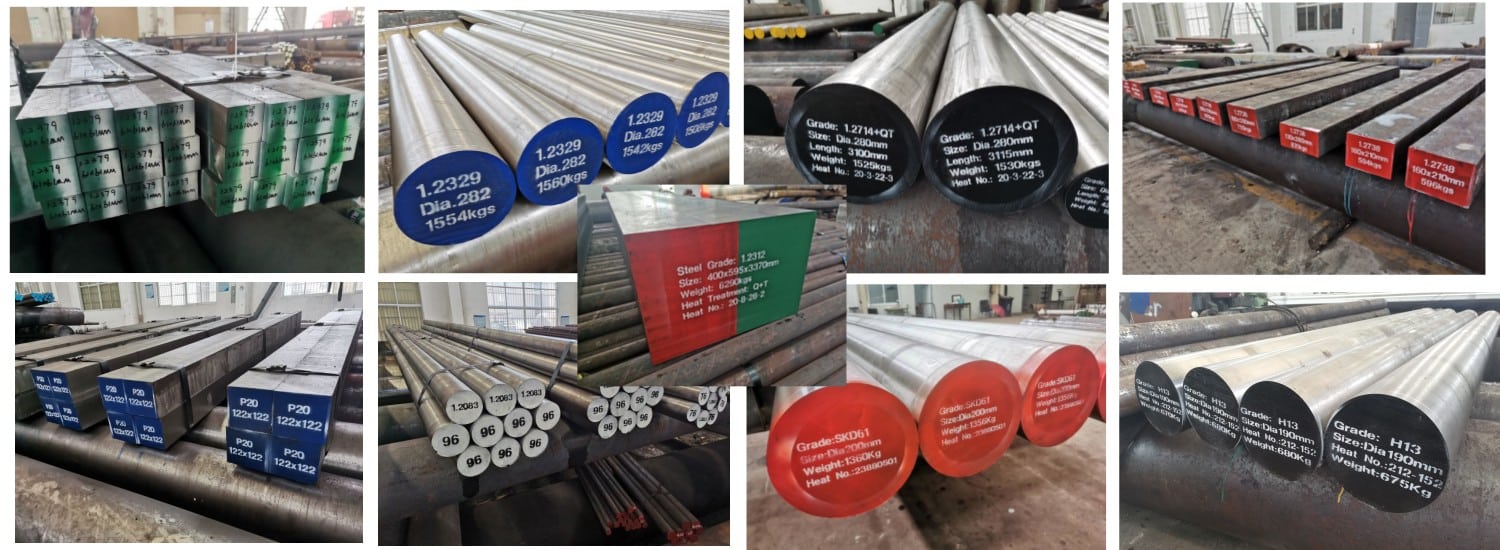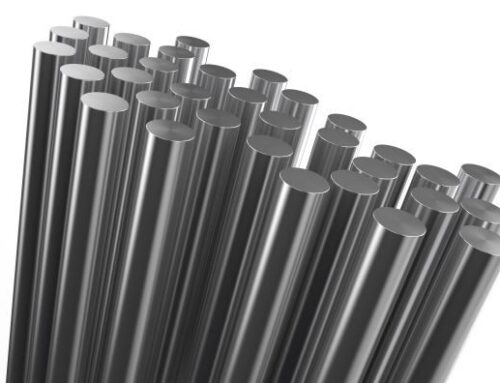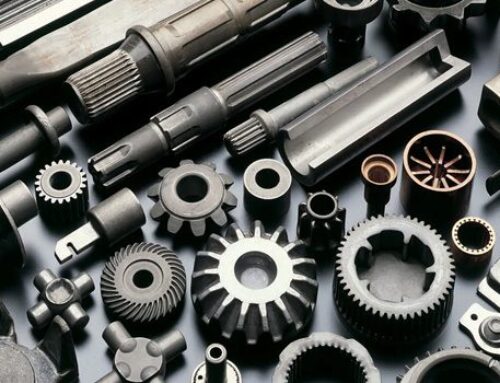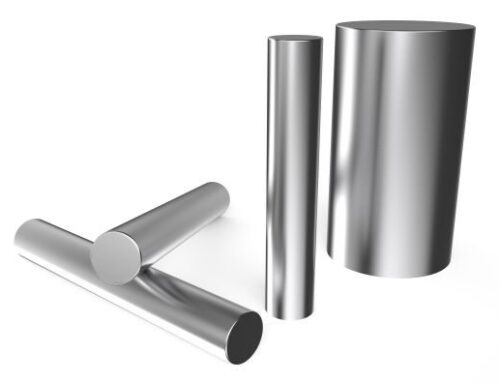TOOL STEEL INTRODUCTION
Tool steel is literally understood as steel for making tools, and the actual definition is a general term for steel used to make various cutting tools, measuring tools, cold/hot deformation molds and other tools.
All kinds of tool steels have common requirements, such as high hardness, good wear resistance, certain toughness and strength, etc.At the same time, they also have their own special requirements, such as red hardness, impact resistance, dimensional stability, thermal fatigue resistance and good comprehensive mechanical properties.
In order to meet these different requirements, various tool steels with different components are used in actual production, and their performance requirements are achieved through appropriate heat treatment processes.

CLASSIFICATION OF TOOL STEEL
Classification By Content of Chemical Composition
- Carbon tool steel
Typical steel grade:C45W,DIN 1.1730
- Alloy tool steel
Typical steel grade: H13,DIN 1.2714,P20,DIN 1.2311,D2
- High speed steel(Essentially high alloy tool steel)
Typical steel grade: M2,DIN 1.3343,T1
Classification By Function & Purpose & Service Condition
- Water-hardened tool steel
This type of tool steel is essentially high carbon steel, named after water quenching heat treatment.In the American Standard, this kind of tool steel is named at the beginning of the code W.
Water-hardened tool steels usually contain 0.5–1.5% carbon and may be present with other alloying elements such as some chromium or vanadium added, usually below 0.5%, which act as hardening elements. But in fact, such tool steels are still basically shallow hardened carbon steels.
Water-hardened tool steel, as the name implies, needs to be water-quenched to obtain a hard outer layer, which can usually reach a high hardness above 63HRC, but compared with other tool steels, this type of tool steel is quite brittle and easier to crack.
Water-hardened tool steels cannot be used in extreme environments and can only withstand continuous temperatures up to 302°F (150°C). Small parts such as light tools, springs, and small fasteners may be its end product applications.
Common water-hardened tool steel heat treatment
| Grade | Normalizing | Annealing | ||
| Temperature | Temperature | Cooling rate | Hardness | |
| W1 | 790-925°C | 740-790°C | ≤ 22°C/h | 156-202HBW |
| W2 | 790-925°C | 740-790°C | ≤ 22°C/h | 156-202HBW |
| W5 | 870-925°C | 760-790°C | ≤ 22°C/h | 163-201HBW |
- Shock-resistant tool steel
Shock-resistant steel is mainly composed of chrome-tungsten steel and silicon-manganese steel, that is, this type of steel usually contains tungsten, silicon, and chromium elements, and has a low carbon content (0.40% – 0.60%).In the American Standard, this kind of tool steel is named at the beginning of the code S.
In shock-resistant steels, the alloying elements silicon and chromium improve the temper stability, strength, hardenability and wear resistance of the material. The addition of tungsten further refines the crystal grains and improves the wear resistance. In addition, tungsten can effectively weaken high temperature temper brittleness, so this type of steel can be tempered at 430~470°C to obtain better toughness and red hardness.
Shock-resistant tool steel is often used to manufacture tools that withstand high impact loads and require wear resistance, such as pneumatic tools, chisels, impact dies, air hammer tools, boiler tools, scissors tools for cold cutting, etc.
Common Shock-resistant tool steel heat treatment
| Grade | Normalizing | Annealing | ||
| Temperature | Temperature | Cooling rate | Hardness | |
| S1 | N/A | 790-815°C | ≤ 22°C/h | 183-229HBW |
| S2 | N/A | 760-790°C | ≤ 22°C/h | 192-217HBW |
| S5 | N/A | 775-800°C | ≤ 14°C/h | 192-229HBW |
| S7 | N/A | 815-845°C | ≤ 14°C/h | 187-223HBW |
- Cold work tool steel
Cold work tool steels mostly work in a cold condition, with high resistance to plastic deformation, high working stress and harsh working conditions. Therefore, in combination, the properties of this type of steel generally require high hardness, wear resistance, sufficient strength and appropriate toughness.
Cold work tool steel is usually composed mainly of high carbon to meet the needs of high hardness and high wear resistance. If toughness needs to be increased in order to improve impact resistance, medium carbon can be used.
When alloying elements are added to cold work tool steel, the main purpose is to improve hardenability and wear resistance. For materials with high wear resistance requirements, carbide-forming elements are often added, such as Cr, Mo, W, V, etc.
Cold work tool steel can generally be divided into three types, oil hardening, air hardening and high carbon-chromium.
Oil-hardened steel in cold work tool steel, with a carbon content of 0.90%. Adding manganese, chromium, tungsten or molybdenum makes it oil hardenable.The machinability of this type of steel is close to that of water-hardened steel. Typical uses are for cold shearing, stamping and cold blanking dies.In the American Standard, this kind of tool steel is named at the beginning of the code O.
Oil-hardened cold work tool steel heat treatment
| Grade | Normalizing | Annealing | ||
| Temperature | Temperature | Cooling rate | Hardness | |
| O1 | 870°C | 760-790°C | ≤ 22°C/h | 183-212HBW |
| O2 | 845°C | 745-775°C | ≤ 22°C/h | 183-212HBW |
| O6 | 870°C | 765-790°C | ≤ 11°C/h | 183-217HBW |
| O7 | 900°C | 790-815°C | ≤ 22°C/h | 192-217HBW |
Medium-alloy air-hardened steel in cold work tool steel, incorporating higher content of chromium, molybdenum and manganese, can be air-quenched to enhance wear resistance. Air quenching minimizes deformation and dimensional changes during heat treatment.In the American Standard, this kind of tool steel is named at the beginning of the code A.
Air-hardened cold work tool steel heat treatment
| Grade | Normalizing | Annealing | ||
| Temperature | Temperature | Cooling rate | Hardness | |
| A2 | N/A | 845-870°C | ≤ 22°C/h | 201-229HBW |
| A3 | N/A | 845-870°C | ≤ 22°C/h | 207-229HBW |
| A4 | N/A | 740-760°C | ≤ 14°C/h | 200-241HBW |
| A6 | N/A | 730-745°C | ≤ 14°C/h | 217-242HBW |
| A7 | N/A | 870-900°C | ≤ 14°C/h | 235-262HBW |
| A8 | N/A | 845-870°C | ≤ 22°C/h | 192-223HBW |
| A9 | N/A | 845-870°C | ≤ 14°C/h | 212-248HBW |
| A10 | 790°C | 765-795°C | ≤ 8°C/h | 235-268HBW |
High carbon-chromium steel in cold work tool steel contains about 12% chromium and high carbon content, which can make the long-running mold obtain excellent performance.
This type of steel has small deformation during heat treatment, strong wear resistance, large hardening depth, and softening resistance at high temperatures.However, this group of steels is difficult to machine and must be ground carefully after hardening to prevent cracks.In the American Standard, this kind of tool steel is named at the beginning of the code D.
High carbon-chromium cold work tool steel heat treatment
| Grade | Normalizing | Annealing | ||
| Temperature | Temperature | Cooling rate | Hardness | |
| D2,D3,D4 | N/A | 870-900°C | ≤ 22°C/h | 217-255HBW |
| D5 | N/A | 870-900°C | ≤ 22°C/h | 223-255HBW |
| D7 | N/A | 870-900°C | ≤ 22°C/h | 235-262HBW |
- Hot work tool steel
Hot work tool steel, working under high temperature and high pressure conditions for a long time. Therefore, this type of steel is required to have high strength, hardness and thermal stability, especially high thermal strength, thermal fatigue, toughness and wear resistance.
Hot work tool steel can generally be divided into three types, Chromium type, molybdenum type and tungsten type.In the American Standard, this kind of tool steel is named at the beginning of the code H.
Chromium steel (H10-H19) in hot work tool steel, the most common steel types such as H11, H12, and H13.These steel grades are deep hardened steels with excellent strength, toughness, resistance to hot cracking at elevated temperatures, and good machinability in the annealed condition.Typical applications are as forging dies, forging pads, casting dies, extrusion dies, and plastic die-casting dies.
Chromium hot work steel heat treatment
| Grade | Normalizing | Annealing | ||
| Temperature | Temperature | Cooling rate | Hardness | |
| H10,H11,H12,H13 | N/A | 845-900°C | ≤ 22°C/h | 192-229HBW |
| H14 | N/A | 870-900°C | ≤ 22°C/h | 207-235HBW |
| H19 | N/A | 870-900°C | ≤ 22°C/h | 207-241HBW |
Tungsten steel (H21-H39) in hot work tool steel has a low carbon content (0.30-0.40%), with 9-18% tungsten as the main alloying element, and chromium is also added.
This group of steel has strong red hardness, deep hardening layer and good wear resistance. This type of steel can be used as hot forging dies and extrusion tools. However, this group of steels are difficult to machine.
Tungsten hot work steel heat treatment
| Grade | Normalizing | Annealing | ||
| Temperature | Temperature | Cooling rate | Hardness | |
| H21,H22,H25 | N/A | 870-900°C | ≤ 22°C/h | 207-235HBW |
| H23 | N/A | 870-900°C | ≤ 22°C/h | 212-255HBW |
| H24,H26 | N/A | 870-900°C | ≤ 22°C/h | 217-241HBW |
Molybdenum steel (H41-H59) in hot work tool steel contains about 0.60% carbon, molybdenum is used as the main alloying element, and chromium, vanadium and a certain amount of tungsten are added.
Higher carbon and alloy elements make this type of steel have good wear resistance while maintaining high red hardness and thermal cracking resistance.
Molybdenum hot work steel heat treatment
| Grade | Normalizing | Annealing | ||
| Temperature | Temperature | Cooling rate | Hardness | |
| H41,H43 | N/A | 815-870°C | ≤ 22°C/h | 207-235HBW |
| H42 | N/A | 845-900°C | ≤ 22°C/h | 207-235HBW |
- High speed tool steel
High-speed tool steel is actually a kind of alloy tool steel, which contains Cr, V, W, Mo, Co and other alloying elements.Because of its high red hardness, good wear resistance, and high strength, this type of steel is mainly used to manufacture high-efficiency high-speed rotary cutting tools.
In the American standard, according to the ratio of Cr, V, W, Mo, and Co elements in high-speed steel, this type of high-speed steel is divided into two categories: Tungsten type(T) and Molybdenum type(M)
Tungsten tool steel heat treatment
| Grade | Normalizing | Annealing | ||
| Temperature | Temperature | Cooling rate | Hardness | |
| T1 | N/A | 870-900°C | ≤ 22°C/h | 217-255HBW |
| T2 | N/A | 870-900°C | ≤ 22°C/h | 223-255HBW |
| T4 | N/A | 870-900°C | ≤ 22°C/h | 229-269HBW |
| T5 | N/A | 870-900°C | ≤ 22°C/h | 235-277HBW |
| T6 | N/A | 870-900°C | ≤ 22°C/h | 248-293HBW |
| T8 | N/A | 870-900°C | ≤ 22°C/h | 229-255HBW |
| T15 | N/A | 870-900°C | ≤ 22°C/h | 241-277HBW |
Molybdenum tool steel heat treatment
| Grade | Normalizing | Annealing | ||
| Temperature | Temperature | Cooling rate | Hardness | |
| M1,M6 | N/A | 815-870°C | ≤ 22°C/h | 207-235HBW |
| M2 | N/A | 870-900°C | ≤ 22°C/h | 212-241HBW |
| M3,M4 | N/A | 870-900°C | ≤ 22°C/h | 235-255HBW |
| M6 | N/A | 870°C | ≤ 22°C/h | 248-277HBW |
| M7 | N/A | 815-870°C | ≤ 22°C/h | 217-255HBW |
| M30,M33,M34,M36,M41,M42,M46,M47 | N/A | 870-900°C | ≤ 22°C/h | 235-269HBW |
| M43 | N/A | 870-900°C | ≤ 22°C/h | 248-269HBW |
| M44 | N/A | 870-900°C | ≤ 22°C/h | 248-293HBW |
- Plastic mold tool steel
Plastic mold tool steel, as the name suggests, is a tool steel used in plastic mold making. They are designed to meet the requirements of zinc die casting and plastic injection molding dies.
These tool steels are usually low in carbon and carburized after machining or rolling can produce good wear resistance.In the American Standard, this kind of tool steel is named at the beginning of the code P.
A typical representative of this type of steel is P20 steel, which is a medium carbon steel that can be heat treated before machining, and will not be heat treated later.This not only improves the manufacturing precision of the mold, but also shortens the manufacturing cycle.
Plastic mold tool steel heat treatment
| Grade | Normalizing | Annealing | ||
| Temperature | Temperature | Cooling rate | Hardness | |
| P2 | Not Required | 730-815°C | ≤ 22°C/h | 103-122HBW |
| P3 | Not Required | 730-815°C | ≤ 22°C/h | 109-137HBW |
| P4 | N/A | 870-900°C | ≤ 14°C/h | 116-128HBW |
| P5 | Not Required | 845-870°C | ≤ 22°C/h | 105-116HBW |
| P6 | Not Required | 845°C | ≤ 8°C/h | 183-217HBW |
| P20 | 900°C | 760-790°C | ≤ 22°C/h | 149-172HBW |
| P21 | 900°C | N/A | / | / |
- Special purpose tool steel
Low-alloy steel in special-purpose tool steel, similar to tungsten steel. Although it is a high-carbon cold work steel, it contains different amounts of alloying elements to increase wear resistance and hardenability.In the American Standard, this kind of tool steel is named at the beginning of the code L.
Low alloy special purpose tool steel heat treatment
| Grade | Normalizing | Annealing | ||
| Temperature | Temperature | Cooling rate | Hardness | |
| L2 | 871-900°C | 760-790°C | ≤ 22°C/h | 163-197HBW |
| L3 | 900°C | 790-815°C | ≤ 22°C/h | 174-201HBW |
| L6 | 870°C | 760-790°C | ≤ 22°C/h | 183-212HBW |
Carbon tungsten steels in special purpose tool steels, often referred to as “finishing” steels. The high content of carbon combined with chromium creates an extremely hard surface for use as a profile cutting edge for deep drawing dies and finishing tools. Such steels do not have red hardness.In the American Standard, this kind of tool steel is named at the beginning of the code F.
Tungsten carbon special purpose tool steel heat treatment
| Grade | Normalizing | Annealing | ||
| Temperature | Temperature | Cooling rate | Hardness | |
| F1 | 900°C | 760-800°C | ≤ 22°C/h | 183-207HBW |
| F2 | 900°C | 790-815°C | ≤ 22°C/h | 207-235HBW |
WAHT WE SUPPLY FOR TOOL STEEL
We have been in the tool steel industry for many years, with rich manufacturing experience and knowledge.If you have any needs in tool steel, please feel free to contact us anytime.
| GB | JIS | DIN (W-Nr) | AISI/SAE |
| Cold Work Tool Steel | |||
| Cr12 | SKD1 | X210Cr12(1.2080) | D3 |
| Cr12MoV | X165CrMoV12 (1.2601) | ||
| Cr12Mo1V1 | SKD11 | X155CrVMo12-1(1.2379) | D2 |
| 9Mn2V | 90MnV8 (1.2842) | O2 | |
| MnCrWV | 100MnCrW4(1.2510) | O1 | |
| SKD2 | X210CrW12(1.2436) | D7 | |
| Cr8Mo1VSi | DC53 | ||
| Hot Work Tool Steel | |||
| SCrNiMo | 55NiCrMoV6 (1.2713) | 6F2 | |
| 5CrNiMo | SKT4 | 56NiCrMoV7(1.2714) | L6 |
| 5CrNi4Mo | X45NiCrMo4(1.2767) | ||
| 3Cr2W8V | SKD5 | X30WCrV9-3 (1.2581) | H21 |
| 4Cr5MoVSi | SKD6 | X38CrMoV51 (1.2343) | H11 |
| SKD61 | X40CrMoV51(1.2344) | H13 | |
| Plastic Mould Steel | |||
| 3Cr2Mo | HPM7 | 40CrMnMo7(1.2311) | P20 |
| 40CrMnMoS8-6 (1.2312) | P20+S | ||
| 3Cr2MnNiMo | HPM1 | 40CrMnNiMo8-6-4(1.2738) | P20+Ni |
| 4Cr13 | SUS420J2 | X40Cr14 (1.2083) | |
| 10Ni3MnCuAl | NAK80 | ||
| 3Cr17Mo | X38CrMo16 (1.2316) | ||



